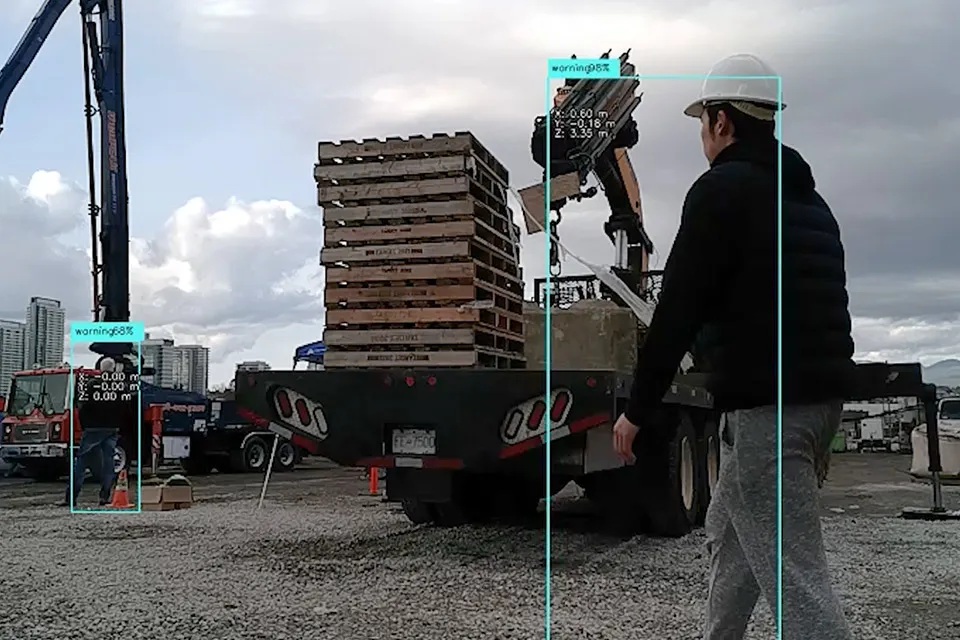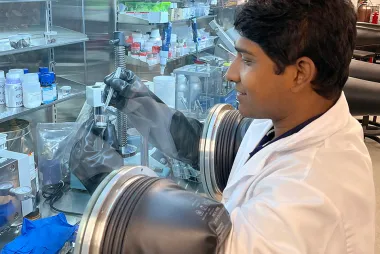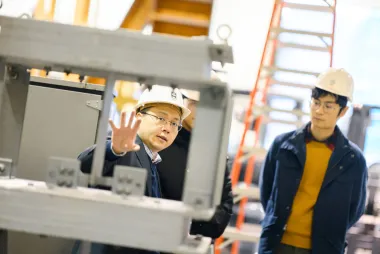AI-powered robots a gamechanger for faster, safer construction

UBC Faculty of Applied Science researchers are transforming construction vehicles — think cranes, forklifts and excavators — into smart construction robots powered by AI.
Structural engineer Dr. Tony Yang, a professor of civil engineering and lead researcher of the Smart Structures lab, explains how these robots will help to speed up construction times, make construction sites safer, and address labour shortages in the industry.
How are AI and robotics being used in construction?
When we began this project, the construction industry didn’t have intelligent robots that can handle the mess and unpredictability of construction sites. Commercially available robots, such as those designed for household cleaning or factory assembly, lack the force capacity needed to lift large structural elements like columns or beams.
Our team decided to solve this problem by adding our own technology to existing construction machines, and creating our own smart construction robots.
Our smart construction robots are able to recognize objects, performing detailed scans of structural components for quality assurance. Aerial drones fitted with cameras can capture details at a construction site, that are used to create a “digital twin” — a simulation of the actual site. Our robots can then precisely place objects on site and check against the digital twin to ensure they’re building according to plan.
Most notably, our robots make autonomous decisions. If a robot is asked to build a wall and senses an unexpected obstacle, it can decide how to navigate around the obstacle and complete its task, without needing a human operator. Our robots can detect if a worker shows up in a danger zone and will instantly stop work to prevent injury.

Are smart construction robots ready to use? How will they impact the industry?
We are working with construction companies to have robots perform precise connection on site, and researching how to re-design a structure to be more modular. These robots will excel at modular construction, but can also speed up individual processes in conventional on-site construction.
Conventional on-site construction requires extensive labour and time, a pressing issue in an industry facing a skilled labour shortage and increased housing demands.
Smart construction robots have the capacity, efficiency and safety measures to alleviate those needs. Robotic sensors can check a structural component 1,000 times per second, and will not tire and make judgment errors.
People can be trained to leverage this technology to build more quickly and safely. This technology can enable you to oversee multiple remote sites from one location, improving efficiency in the industry.
How do you imagine the future of a construction site to look when this technology is fully developed and implemented?
We see this technology fully maturing within the next decade. The next construction era will be fully digitalized, allowing real-time monitoring of construction site activities, and knowing where machines, labour and materials are located within a construction site at all times.
When materials arrive, robots will perform detailed scans against required specifications for quality assurance, compare components with computer models, and start assembling on-site.
Precision robot construction will optimize machine usage by eliminating idle time and fuel consumption, thereby reducing greenhouse gas emissions within the industry.
The most exciting aspect is that this technology is ready to deploy now and can be quickly scaled up to use all around the world. We can get a hired machine shipped to site and ask it to do what we want, monitoring it remotely.
We believe this made-in-BC robotic technology is ready to deploy now and can be quickly scaled up, helping to elevate Canadian construction and make us more competitive on the global stage.



